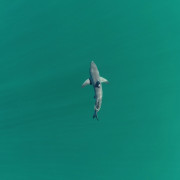- Science News
- Environment
- Most read articles of March 2022: Secrets of ancient leftovers revealed and endangered shark discovered in pet food
Most read articles of March 2022: Secrets of ancient leftovers revealed and endangered shark discovered in pet food
By Colm Gorey, Science Communications Manager, Frontiers

Image: Shutterstock.com
Each month, Frontiers shines a spotlight on some of the leading research across a wide range of topics. Here are just some of the highlights that resonated strongly with readers on our news site in the month of March.
Leftovers in prehistoric pots let scientists peek into the kitchen of an ancient civilization
How do you reconstruct the cookery of people who lived thousands of years ago? Bones and plant remains can tell us what kind of ingredients were available. But to reconstruct how ingredients were combined and cooked, scientists need to study ancient cooking vessels.
“Fatty molecules and microscopic remains from plants such as starch grains and phytoliths – silica structures deposited in many plant tissues – get embedded into vessels and can survive over long periods,” said Dr Akshyeta Suryanarayan, a researcher at the Universitat Pompeu Fabra in Barcelona, Spain, and co-author on a recent study in Frontiers in Ecology and Evolution.
In their study, Suryanarayan and co-authors analyzed such ‘leftovers’ in Copper and Bronze Age vessels – including pots, vases, goblets, jars, and platters – from today’s Gujarat, India.
“Our study is the first to combine starch grain and lipid residue analysis of ancient vessels in South Asia,” said Suryanarayan. “Our results show how the prehistoric people who made these vessels processed different foodstuffs and mixed them together, transforming them into meals.”
Article link: https://www.frontiersin.org/articles/10.3389/feart.2022.861163/full
2. DNA barcoding identifies endangered shark species secretly added to pet food
If you ever read the ingredient list on your pet’s favorite food, you may come across ambiguous terms such as ‘fish’, ‘ocean fish’, or ‘white bait’. Have you ever wondered what exactly these ingredients are? A team of researchers at Yale-NUS College in Singapore analyzed pet food products purchased within Singapore and discovered that these terms may refer to endangered shark meat.
The growing shark fin and meat trade is putting shark populations at risk. Research suggests that around 100m sharks may be killed annually. Overfishing is the biggest threat to sharks worldwide, and a lack of effective monitoring and management of fishing practices adds burden to vulnerable shark species.
The results published to Frontiers in Marine Science demonstrate the high overfishing pressure to which sharks are increasingly subjected.
“The majority of pet owners are likely lovers of nature, and we think most would be alarmed to discover that they could be unknowingly contributing to the overfishing of shark populations,” commented the authors.
Article link: https://www.frontiersin.org/articles/10.3389/fmars.2022.836941/full
3. New high-resolution map shows fires caused one third of global forest loss between 2001 and 2019
The severe wildfires in Australia, California, and Brazil in recent years have attracted the world’s attention to the threat of forest fires. However, there is a lack of clear and consistent global data on the types and drivers of forest fires.
“In the case of the Amazonian fires of 2019, there was no clear information on what exactly was burning: forests or previously deforested areas that had been converted to pasture and cropland,” explained Dr Alexandra Tyukavina, of the University of Maryland.
“Even I, as a geographer, was terrified reading all the headlines that seemed to imply that the last patch of the Amazonian rainforest was on fire, which was not true.”
Tyukavina and her colleagues attempted to close the information gap surrounding forest fires by producing the first ever 30m resolution (a 30 meter pixel represents a square patch of the land with a 30 meter side) global map of forest loss due to wildfires between 2001 and 2019. The study was published in Frontiers in Remote Sensing.
Article link: https://www.frontiersin.org/articles/10.3389/frsen.2022.825190/full
4. Last of the giant camels and archaic humans lived together in Mongolia until 27,000 years ago
A species of giant two-humped camel, Camelus knoblochi, is known to have lived for approximately a quarter of a million years in Central Asia. A new study in Frontiers in Earth Science shows that C. knoblochi’s last refuge was in Mongolia, until approximately 27,000 years ago.
In Mongolia, the last of the species coexisted with anatomically modern humans and maybe the extinct Neanderthals or Denisovans. While the main cause of C. knoblochi’s extinction seems to have been climate change, hunting by archaic humans may also have played a role.
“Here we show that the extinct camel Camelus knoblochi persisted in Mongolia until climatic and environmental changes nudged it into extinction about 27,000 years ago,” said Dr John W Olsen, Regents’ professor emeritus at the School of Anthropology of the University of Arizona, Tucson, US.
Article link: https://www.frontiersin.org/articles/10.3389/feart.2022.861163/full
5. Climate crisis is making endangered mountain gorillas more thirsty
Endangered mountain gorillas increase the frequency they drink water as the temperature increases, suggesting a likely impact of climate change on their behavior, finds a recent study published in Frontiers in Conservation Science.
Researchers used 10 years of data from observations on the only two existing mountain gorilla populations and found that both populations drank water significantly more often at higher average temperatures than cooler ones.
The results have important implications for the behavior and conservation of mountain gorillas, which are faced with continued increases in temperature and frequency of extreme weather events due to the climate crisis.
Article link: https://www.frontiersin.org/articles/10.3389/fcosc.2022.738820/full
REPUBLISHING GUIDELINES: Open access and sharing research is part of Frontiers’ mission. Unless otherwise noted, you can republish articles posted in the Frontiers news site — as long as you include a link back to the original research. Selling the articles is not allowed.







